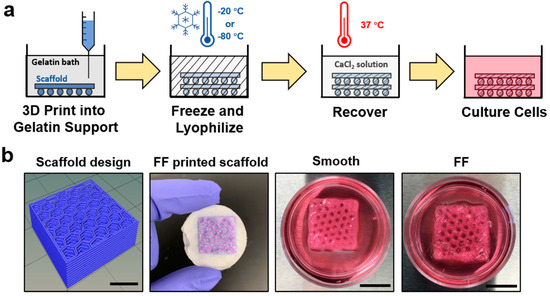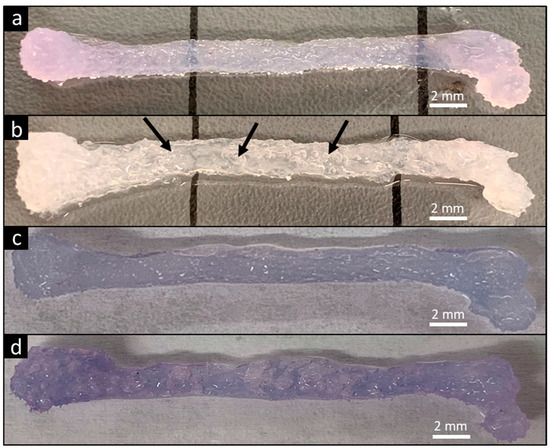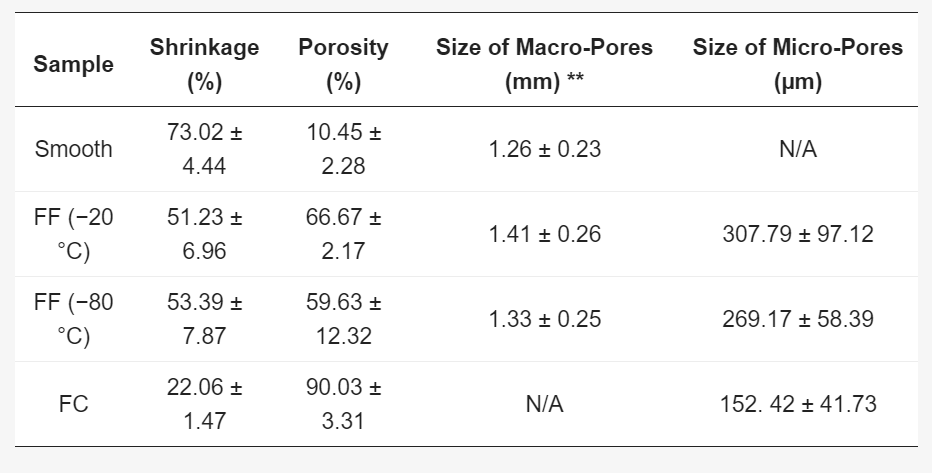Researchers Zi Wang and Stephen J. Florczyk of the University of Central Florida have developed a new technique for bioprinting, outlined in the recently published ‘Freeze-FRESH: A 3D Printing Technique to Produce Biomaterial Scaffolds with Hierarchical Porosity.’
Although many researchers and laboratories are engaged in bioprinting today, and reporting success, great challenges still remain for improving viability and sustainability of cells in tissue engineering. While bioprinting is a field that is still relatively new—and full of incredible potential for the end-game in 3D printing human organs—methods and materials abound; however, in this study, a truly unique new way of 3D printing emerges to overcome obstacles in production of single conventional scaffolds. The Freeze-FRESH (FF) technique integrates freeze casting with 3D printing, resulting in scaffolds that bear microscale pores in the struts.
FRESH, freeform reversible embedding of suspended hydrogels, employs gelatin in the support bath—where scaffolds (printed at room temperature) are frozen in the support bath, leaving researchers to study:
- Pore morphology
- Pore size
- Porosity
- Shrinkage
- Stiffness
“The FF scaffolds had a hierarchical pore structure from the combination of microscale pores throughout the scaffold struts and macroscale pores in the printed design, while control scaffolds had only macroscale pores,” explained the researchers.

The Freeze-FRESH (FF) technique enables 3D printing of biomaterial scaffolds with hierarchical porosity. (a) A schematic illustration of the FF technique. (b) Comparison of the scaffold design, the FF scaffold in support bath after freezing and freeze drying, and the smooth and FF 3D printed scaffolds after recovery from the support bath. The recovered scaffolds were immersed in cell culture media. The bubbles on the FF scaffold struts denote porosity on the scaffold struts. Scale bars are 10 mm.
Temperature parameters resulted in the following:
- FF scaffolds frozen at −20 °C and −80 °C had similar pore sizes.
- The −20 °C and −80 °C FF scaffolds had porous struts with 63.55% ± 2.59% and 56.72% ± 13.17% strut porosity.
- Control scaffolds had a strut porosity of 3.15% ± 2.20%.
- The −20 °C and −80 °C FF scaffolds were softer than control scaffolds.
Clusters of cells grew on the porous struts, leading to good microscale porosity in the 3D printed scaffolds, ‘enhancing MDA-MB-231 growth’ for culturing breast cancer cells. The researchers created samples (measuring 20 mm × 20 mm × 6 mm) designed in SolidWorks and fabricated using a Biobots 1 3D printer. A sample model of a human femur was also printed via the FF method, measuring 44.96 mm × 7.95 mm × 6.91 mm (l × w × h), and treated the same way as the scaffolds.

The FF technique produces scaffolds with hierarchical pore structures. Morphological differences in the pore structures of alginate scaffolds: smooth, FF frozen at −20 °C and −80 °C, FC, and PCL 3D printed scaffolds. Scale bars are 300 μm.
Overall, the samples showed good structure, and stability after being soaked. The smooth scaffold samples did not present bubbles, although FF scaffolds did, which were noted as ‘indicating pore formation’ in the struts.
Smooth scaffolding showed the greatest bulk stiffness, ahead of the −20 °C and −80 °C FF scaffolds, and then the FC scaffolds, showing the least amount of bulk stiffness. The researchers noted ‘significant differences’ in all paired groups except the −20 °C and −80 °C FF scaffolds.

FF scaffolds support breast cancer cell growth. Alginate scaffolds were prepared with and without RGD peptide conjugation as smooth, FF, and FC scaffolds. The scaffolds were evaluated with MDA-MB-231 culture and cell numbers were assayed at 3 d and 7 d. (*) denotes significant difference where p < 0.05.
“Both smooth and FF scaffolds remained intact without damage after bending. When bent further, the smooth scaffolds started to delaminate and lose structural integrity. The reduced cross-sectional area in the FF scaffolds may enable this greater resilience,” explained the researchers.
“The 231 cells formed multicellular clusters on struts of FF scaffolds and had similar morphologies to the cells cultured in the FC scaffolds. Our work demonstrated that FF printing produced scaffolds with hierarchical pore structures that improved breast cancer cell growth. In future studies, other polymer inks will be evaluated for FF printing to broaden the materials that can be used.”
What do you think of this news? Let us know your thoughts! Join the discussion of this and other 3D printing topics at 3DPrintBoard.com.

FF technique supports printing of complex designs. A human femur model was used for demonstration. Smooth print (a) and FF print (b) after recovery from support bath. Pores within the printed FF femur are visible by the presence of entrapped air bubbles (arrows). Immersing the smooth (c) and FF prints (d) in dye solution caused diffusion of dye throughout the print. The darker color in the FF print demonstrated the formation of interconnected pores in the structure.
Subscribe to Our Email Newsletter
Stay up-to-date on all the latest news from the 3D printing industry and receive information and offers from third party vendors.
You May Also Like
Gorilla Sports GE’s First 3D Printed Titanium Cast
How do you help a gorilla with a broken arm? Sounds like the start of a bad joke a zookeeper might tell, but it’s an actual dilemma recently faced by...
Nylon 3D Printed Parts Made More Functional with Coatings & Colors
Parts 3D printed from polyamide (PA, Nylon) 12 using powder bed fusion (PBF) are a mainstay in the additive manufacturing (AM) industry. While post-finishing processes have improved the porosity of...
$25M to Back Sintavia’s Largest Expansion of Metal 3D Printing Capacity Since 2019
Sintavia, the digital manufacturing company specializing in mission-critical parts for strategic sectors, announced a $25 million investment to increase its production capacity, the largest expansion to its operations since 2019....
Velo3D Initiates Public Offering in a Bid to Strengthen Financial Foundations and Drive Future Growth
Velo3D (NYSE: VLD) has been among a number of publicly traded 3D printing firms that have attempted to weather the current macroeconomic climate. After posting a challenging financial report for 2023,...
































